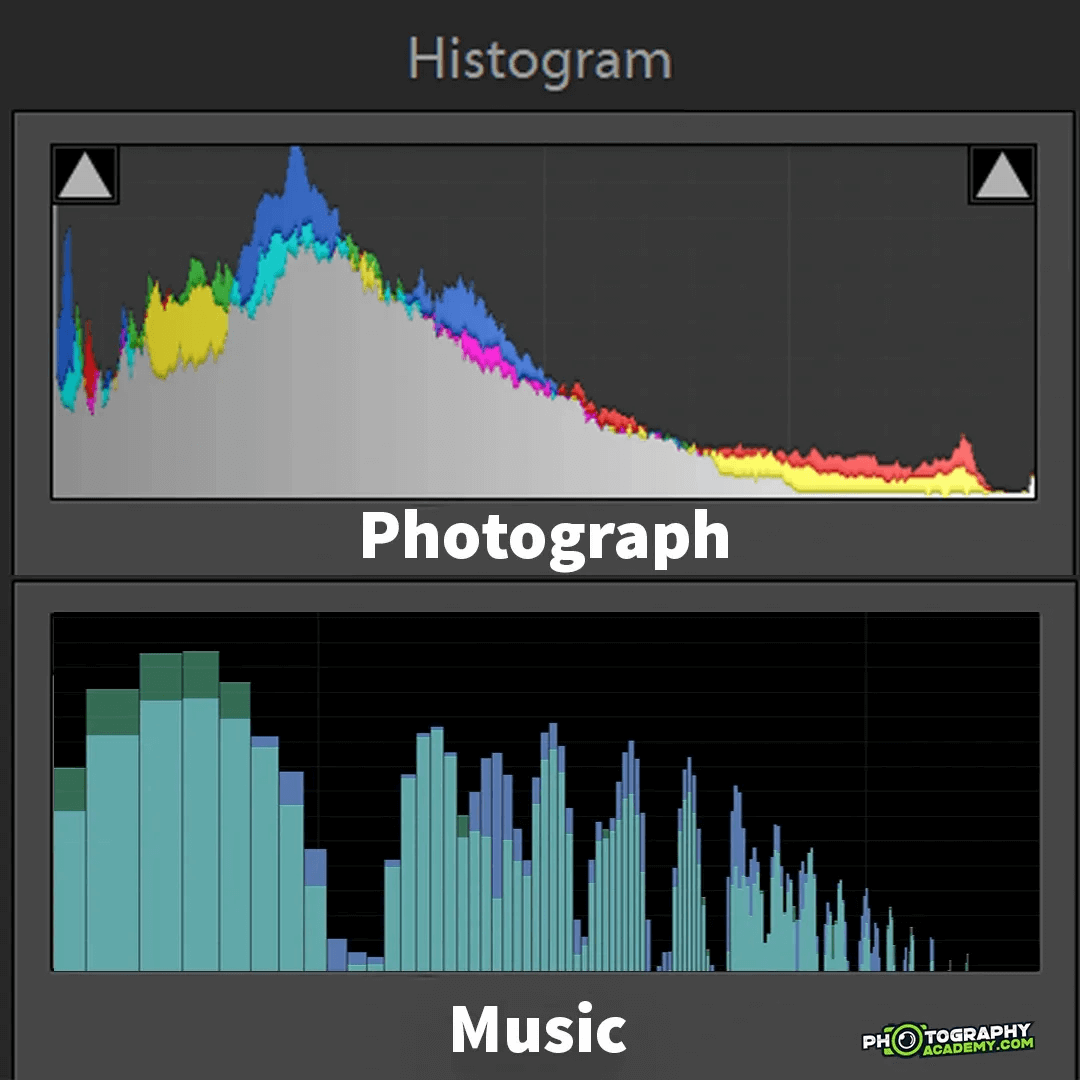The histogram is a photographer’s best friend, and the easiest way to understand how it works is to compare it to music.
If you look at a music equalizer, the bars on the left represent the bass, and the bars on the right represent the high notes, or treble.

The same is true with a photo’s histogram. The left represents the black tones and the right represents white tones. The histogram built into every camera can show if the photo is properly exposed or not. Like when recording music, it’s easy to see if the levels are off if the majority of the bars are too far to the left or right. Well, if the histogram shows more information on the far right, the highlights will be blown out. There may not be enough recoverable shadow detail if the histogram is too far to the left.
Blown out highlights are not fixable in post-production
The important thing to remember about digital photography is that shadows can typically be brought back. But clipped highlights are unrecoverable in Lightroom and Photoshop. And the back of the screen doesn’t have enough detail to show if the highlights are clipped.
That’s why camera manufacturers built in this important tool. Because it gives the photographer a hint that there’s something wrong before they turn the camera off and return home. Because there’s nothing worse than coming home with bad, unusable photographs.
Watch this video to see how to use the histogram through music, and how you can actually “see” music. And… watch as I pick up a guitar and strum three of the five chords I know! (Maybe I can sing better than I can play guitar… haha)
Happy shooting!
Tim



